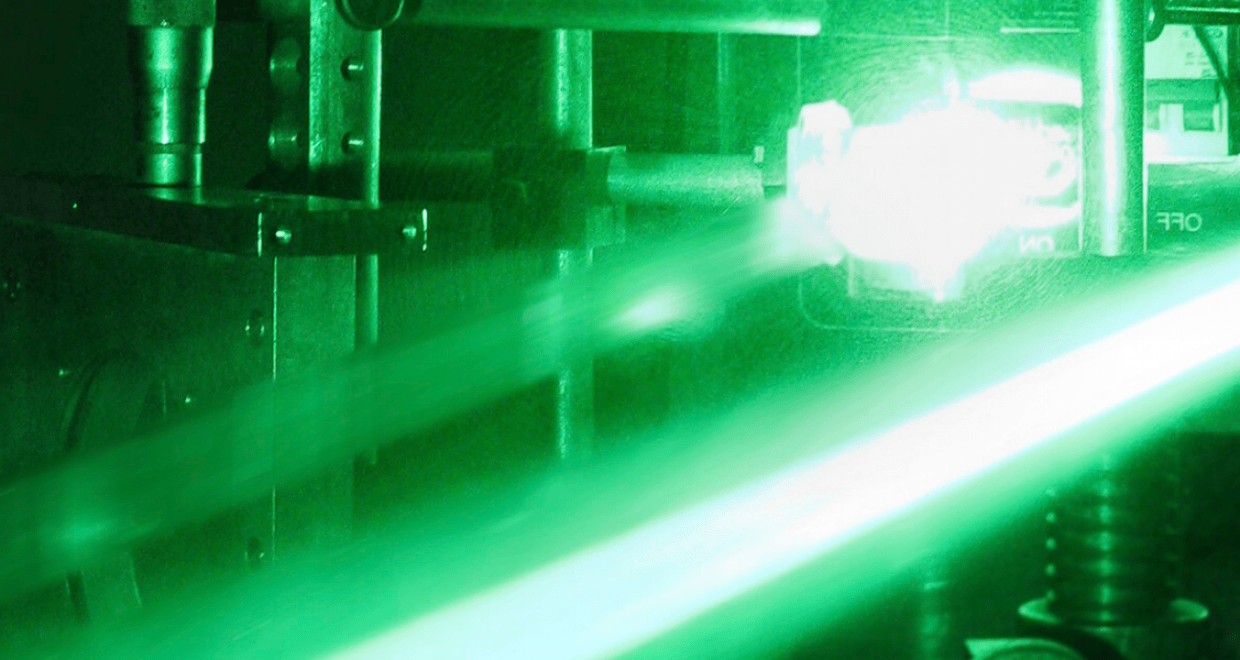The History of Laser Output Power Density Growth – 60th anniversary of the laser
It was May 1960, when Theodor Maiman presented the first Laser. The underlying principle of stimulated emission of radiation was postulated decades before by Albert Einstein.
Stimulated emission of radiation and the achievement of population inversion of the participating electronic levels constitute the foundation of the laser principle. Population inversion requires an effective optical pumping mechanism. The pumping power (P), necessary to achieve population inversion increases with the 4th power of the radiation frequency ν (P~ν^4). Therefore radiation amplification by stimulated emission was first demonstrated (1951) in the microwave regime. Lasing in the x-ray regime was demonstrated only in 1985, when high power lasers like the NOVA laser in Livermore became available.
It is interesting to note that Maiman’s submission of the manuscript was first rejected. Moreover his home institute (Hughes) did not support Maiman very much because at that time only few people recognized the vast possibilities for laser applications, and even Maiman himself thought that the laser is ‘a solution of a problem that did not yet exist’.
Today lasers have found applications almost everywhere. Most interesting for readers and authors of the journal Laser and Particle Beams (LPB) is the history of laser output power density growth. The invention of Q-switching and Mode- Locking soon brought the output power density into the regime of 1014 to 1015 W ⁄ cm2 where it remained, until the invention of Chirped Pulse Amplification by Mourou and Strickland. This idea opened the regime up to 1022 W ⁄ cm2 and above.
Today Lasers are the optimum tool to concentrate energy in space and time. Already during the 1970s it became common knowledge that lasers are an ideal tool to generate states of high energy density, eventually high enough to induce thermonuclear fusion in a small sample of matter that can be contained in a reactor vessel.
In 1983 the journal Laser and Particle Beams – under the editorship of Heinrich Hora- started to cover High Energy Density Physics, a research topic of fundamental nature. Nobel Laureate Nikokay G. Basov remarked, that much efficiency is lost, when low entropy laser light is converted to high entropy thermal radiation to drive a fusion pellet. Therefore other drivers like pulsed power and intense particle beams offer alternative pathways to generate high energy density in matter and eventually nuclear fusion energy. Experiments and theory nowadays focus on highly non-linear phenomena. The Laser and Particle Beams journal is committed to pure and applied research in High Energy Density Physics with emphasis on nuclear fusion energy and material properties under extreme conditions.
LPB has outlined the development in this field since 1983. At the following link LPB authors including Nobel laureates Gerard Mourou and Nikalay G. Basov, as well as other leading scientists in the field, present a collection of articles demonstrating this development.
Access Key articles for free – LPB: Development of high power lasers
Read more on the 60th anniversary of the Laser – www.cambridge.org/Laser60
To celebrate the 60th Anniversary of the Laser Cambridge are offering free content from LPB and more. Discover your new favourite articles and a 20% discount on selected books as well as more blogs and laser information at our Content Hub on Cambridge Core.







